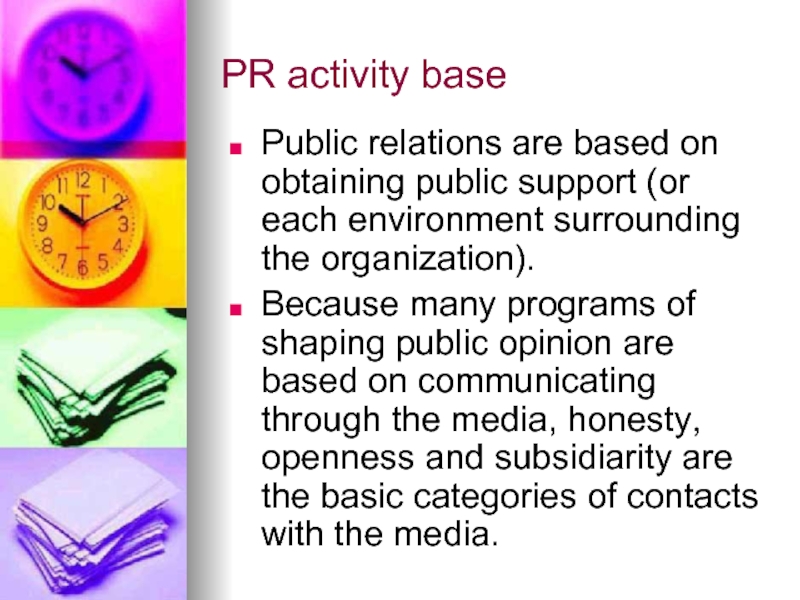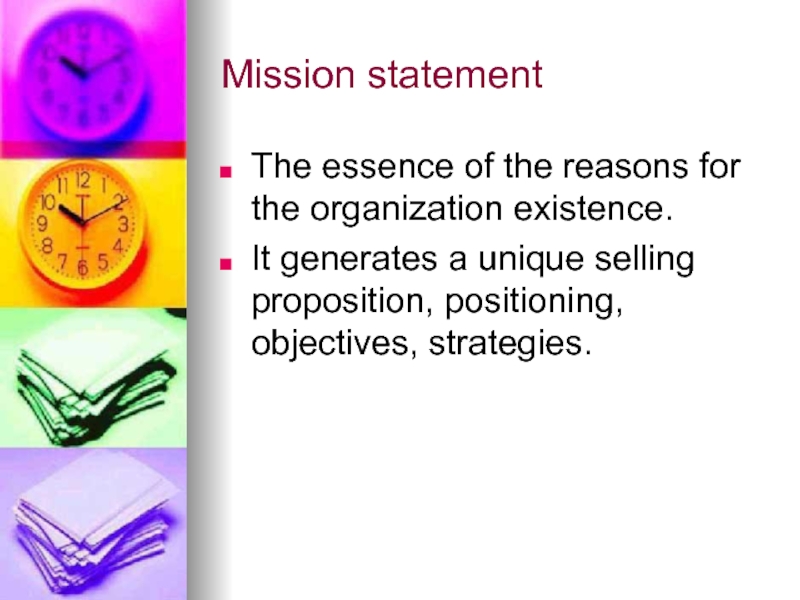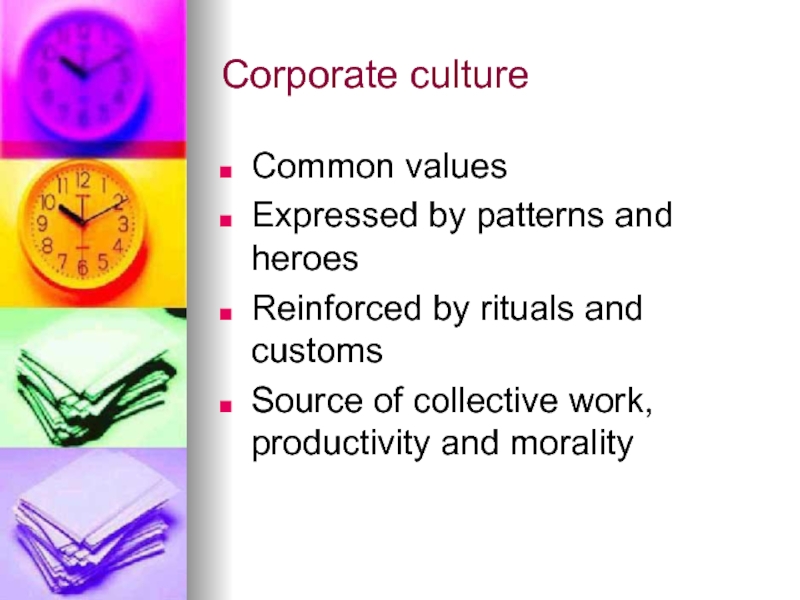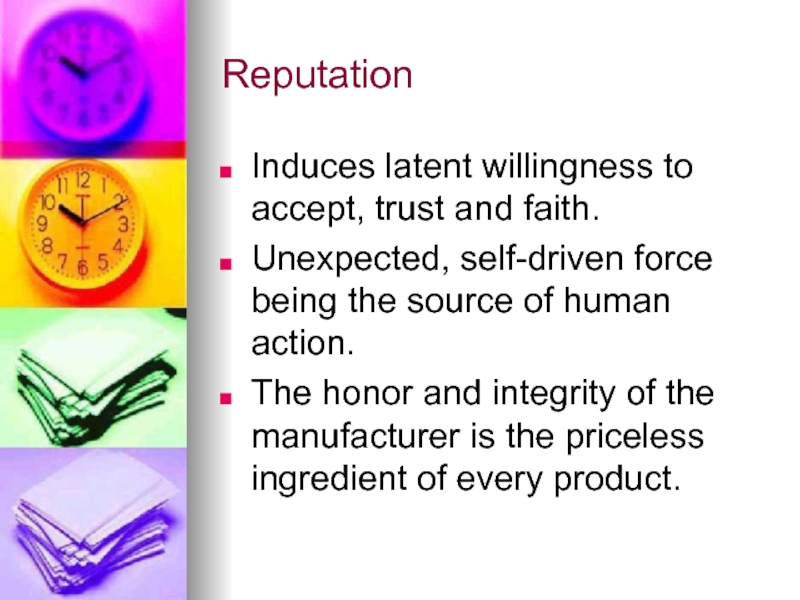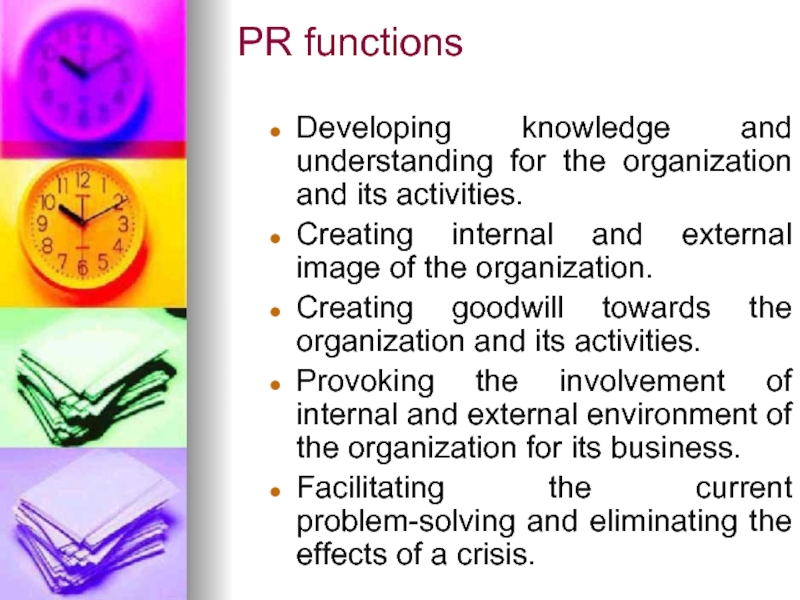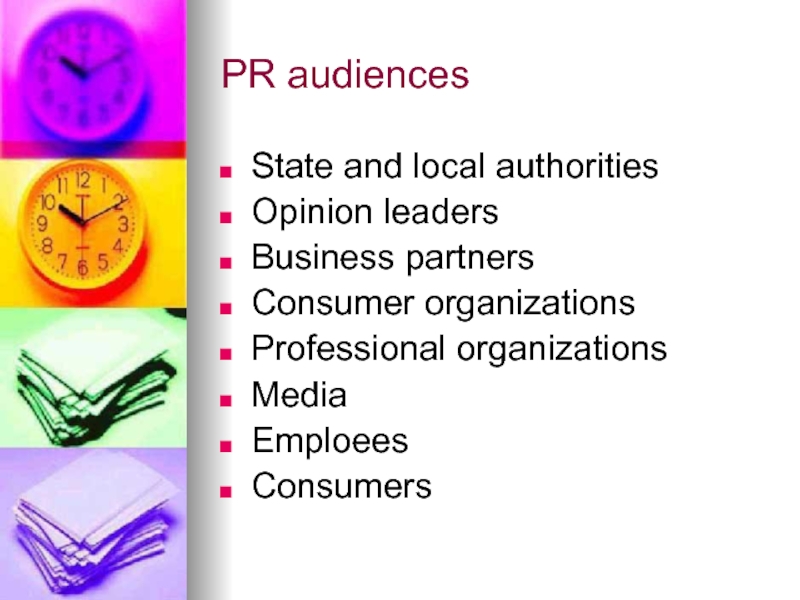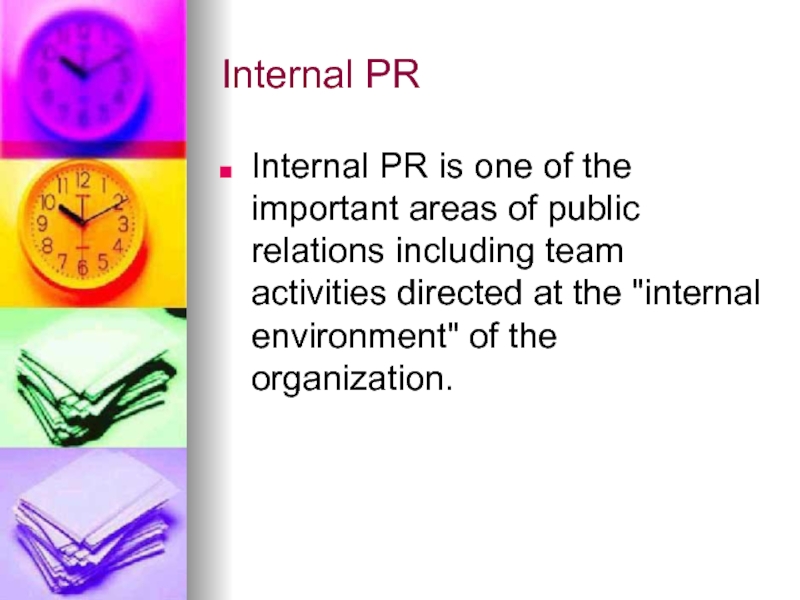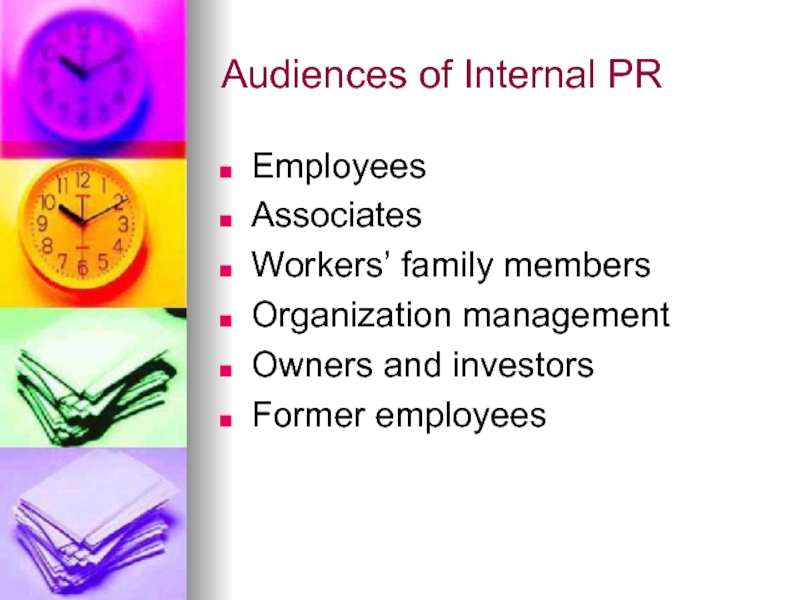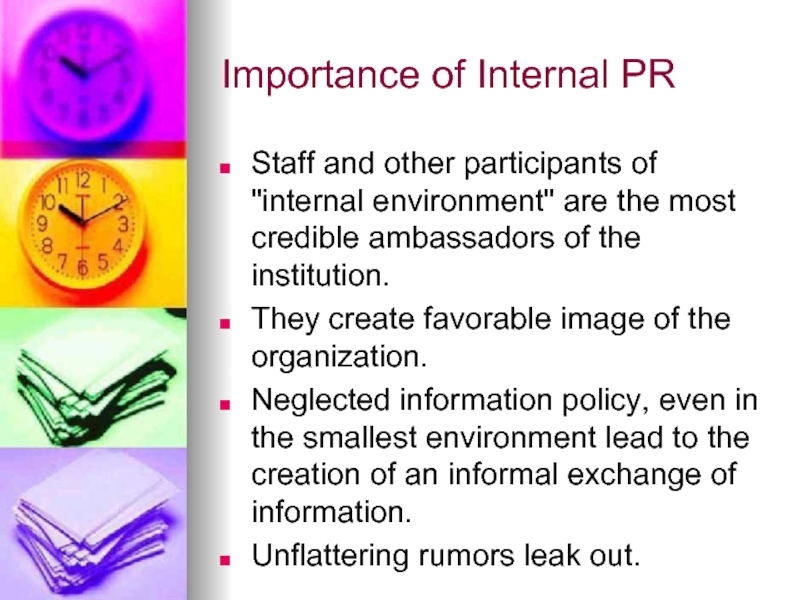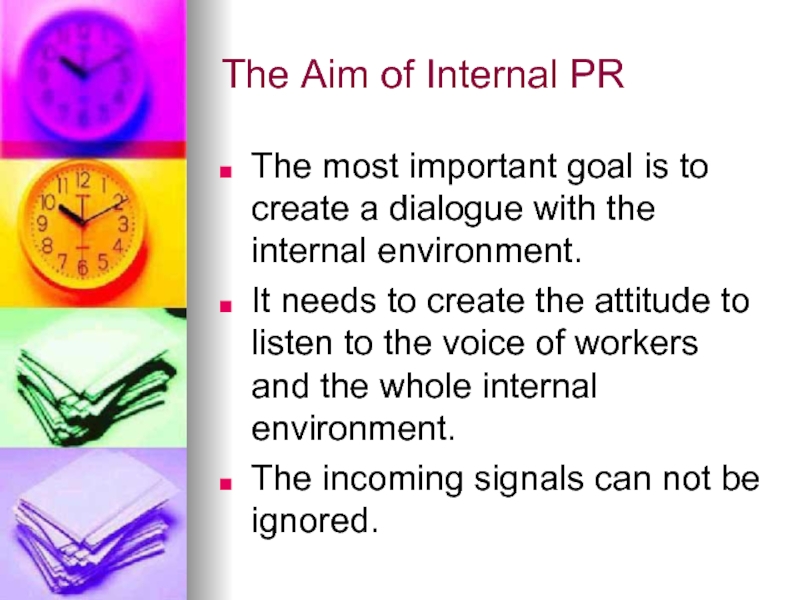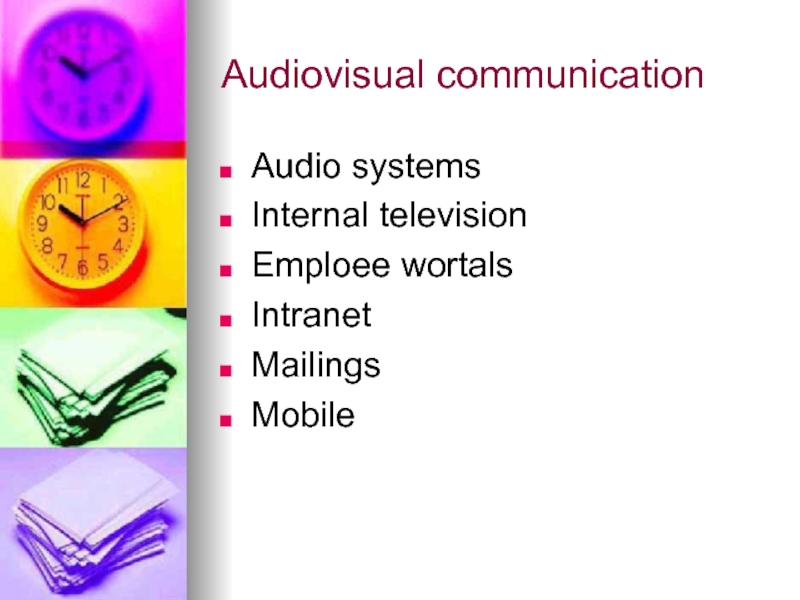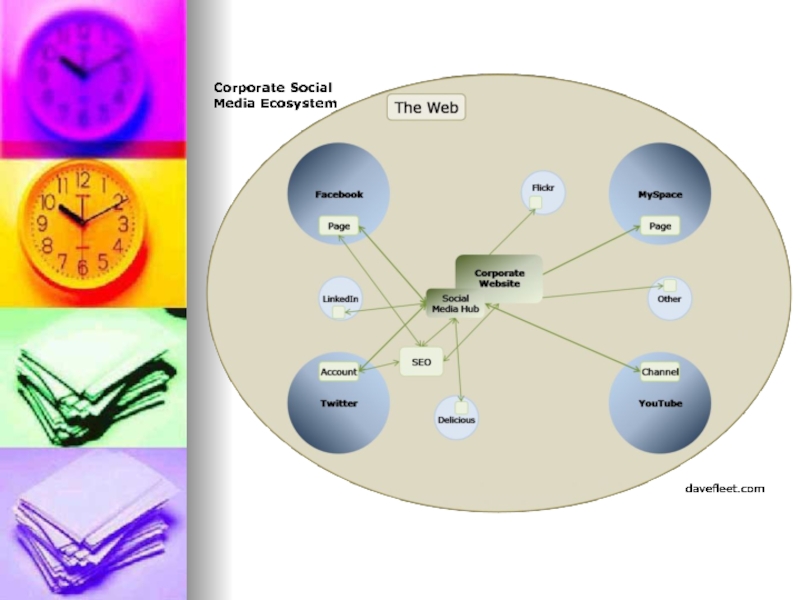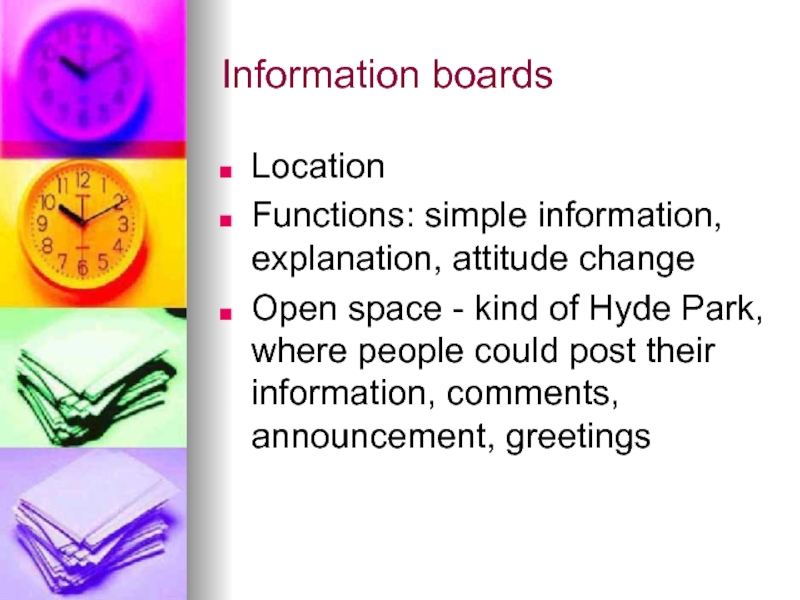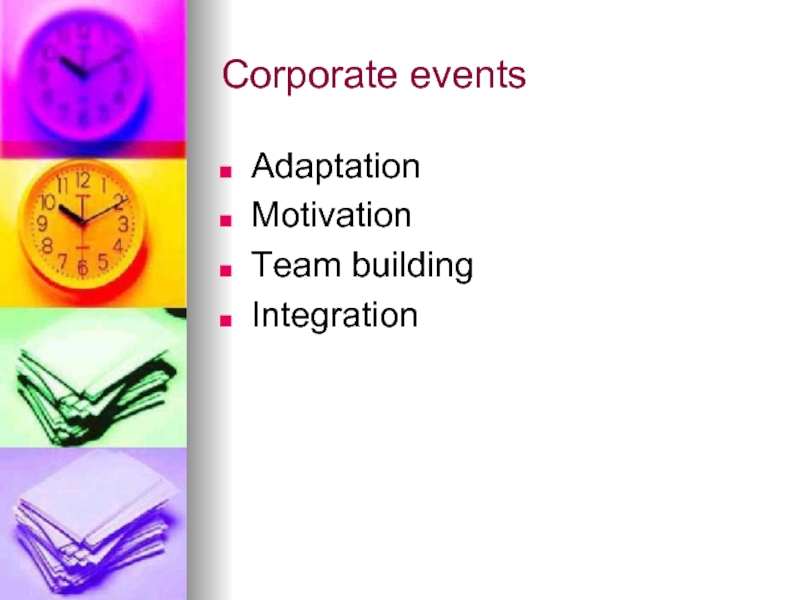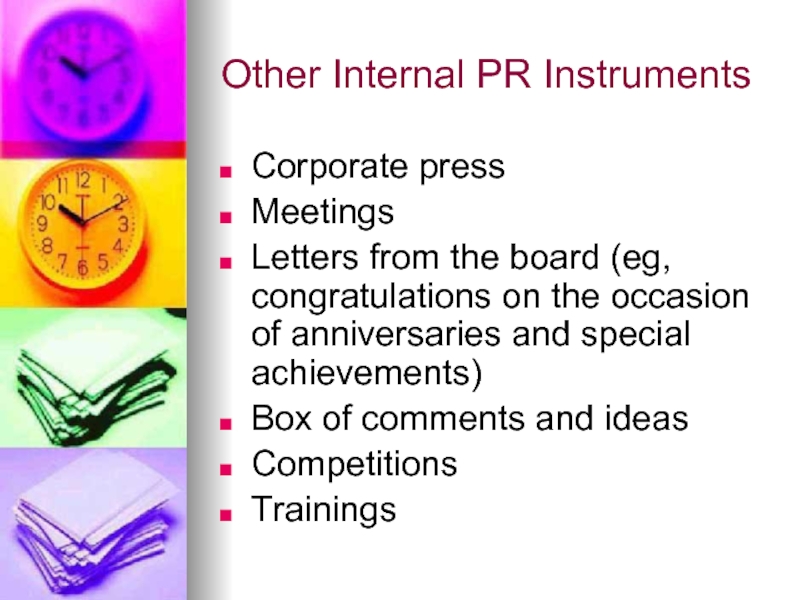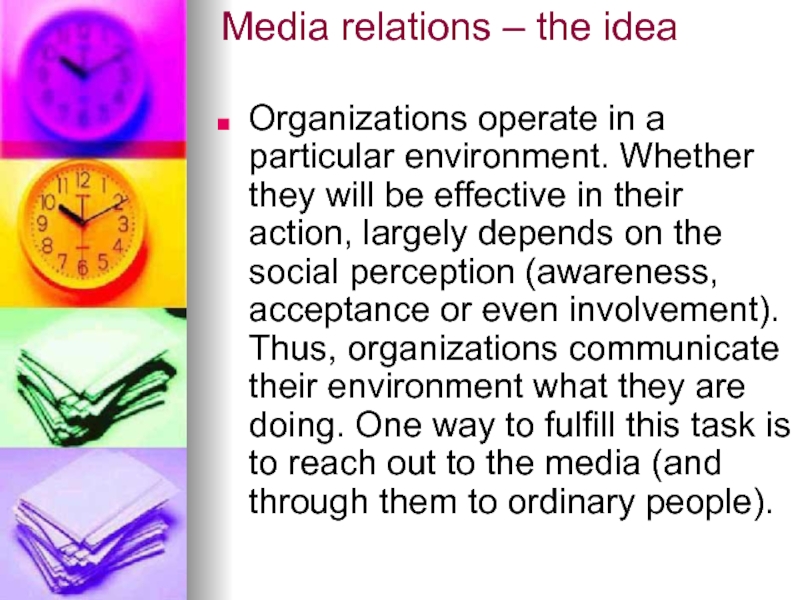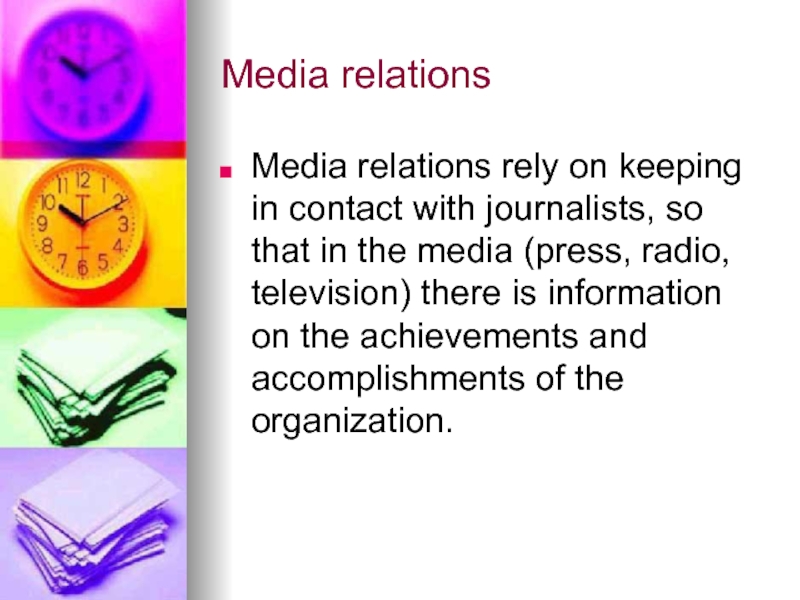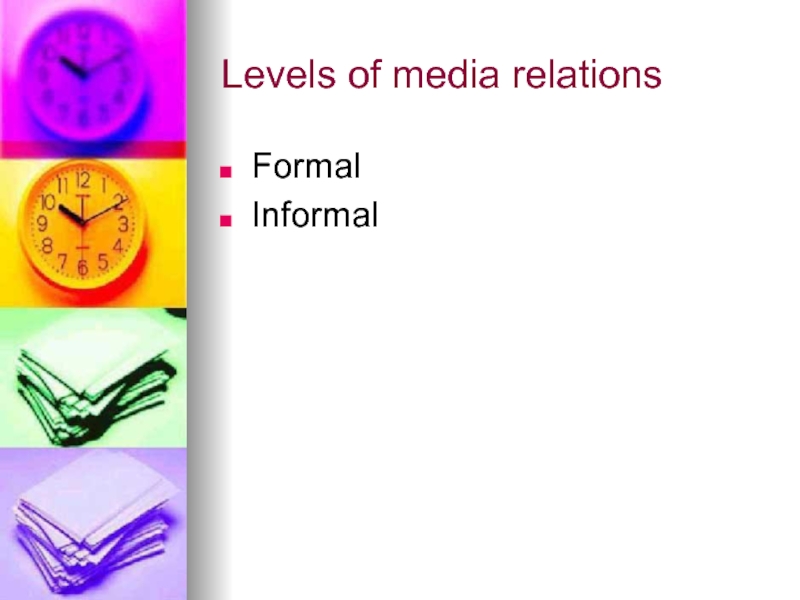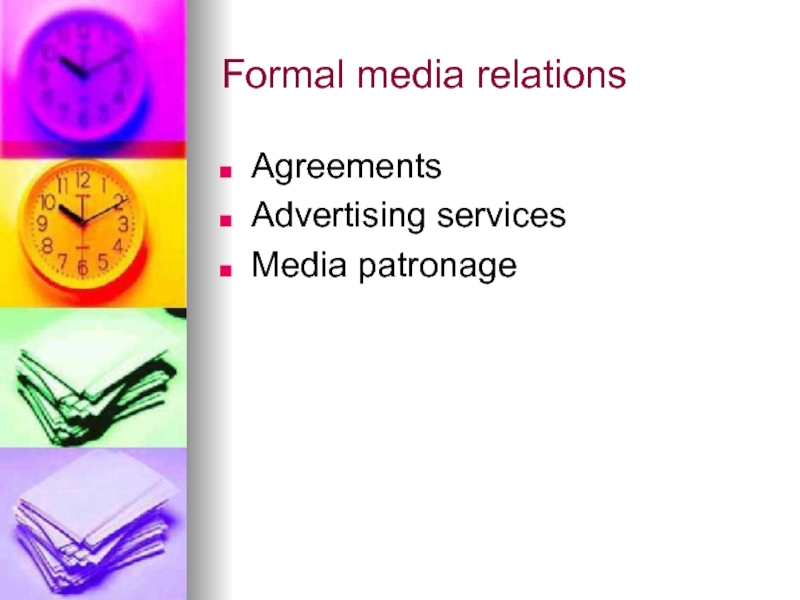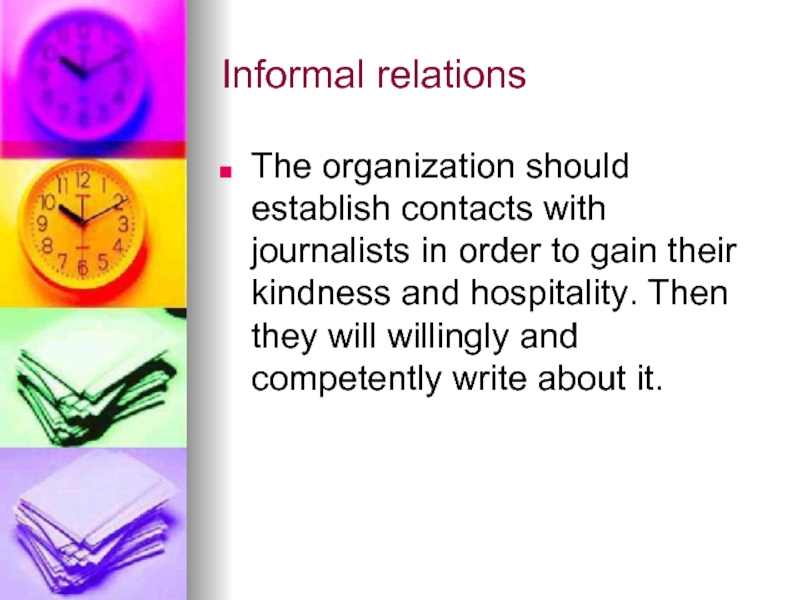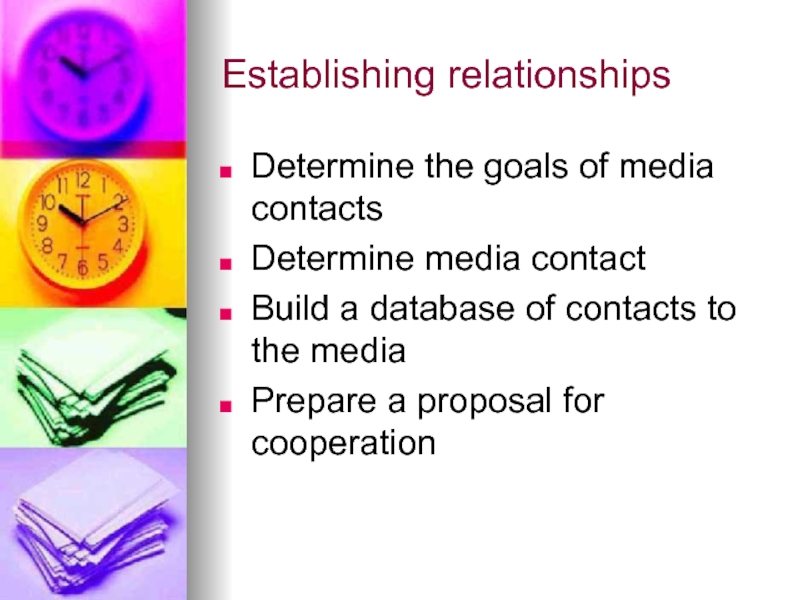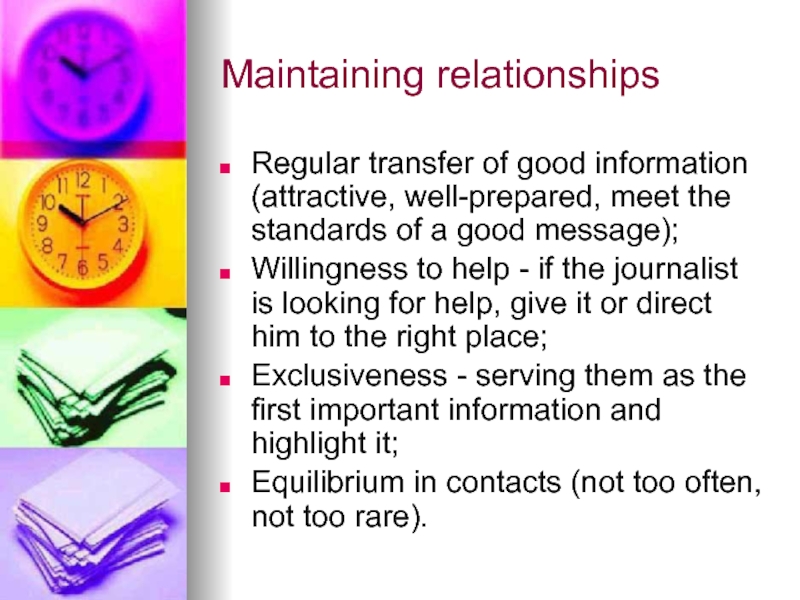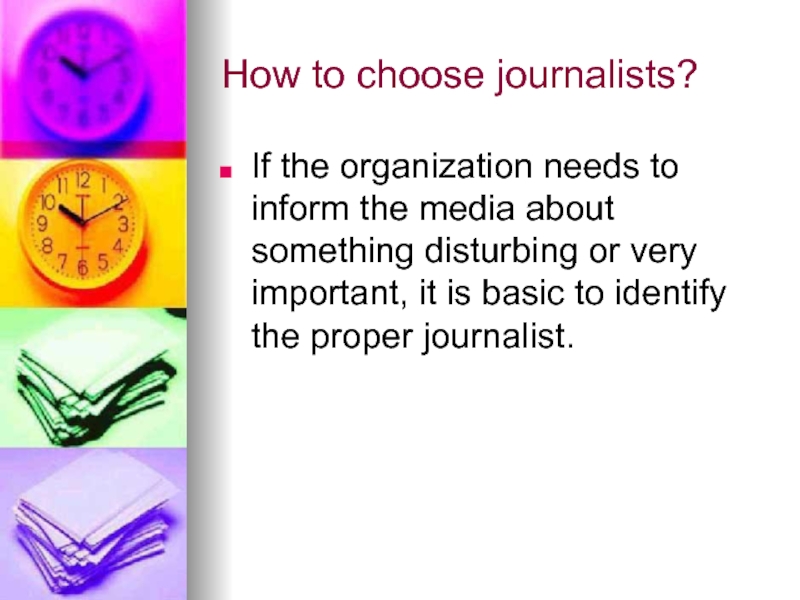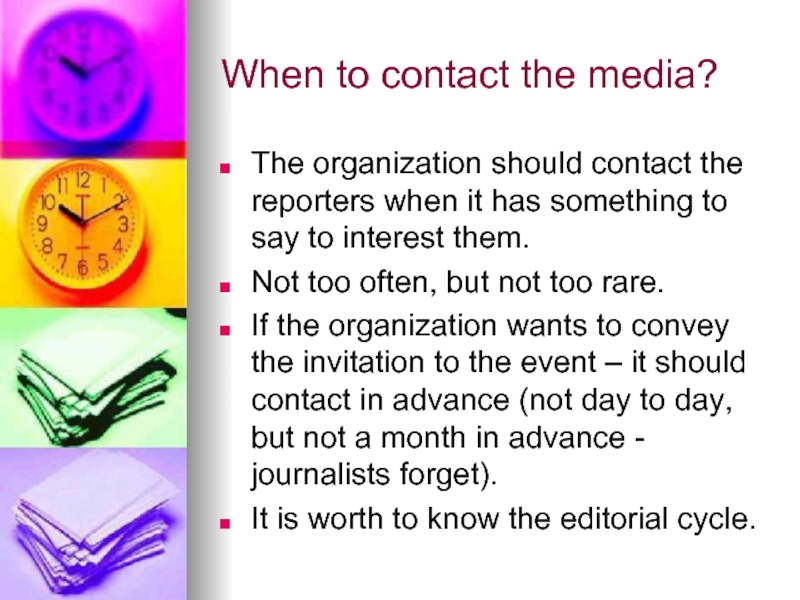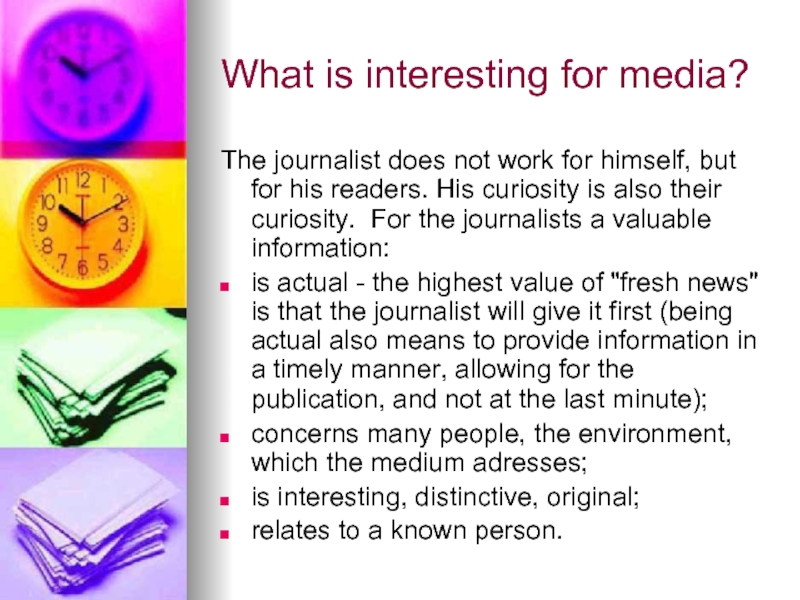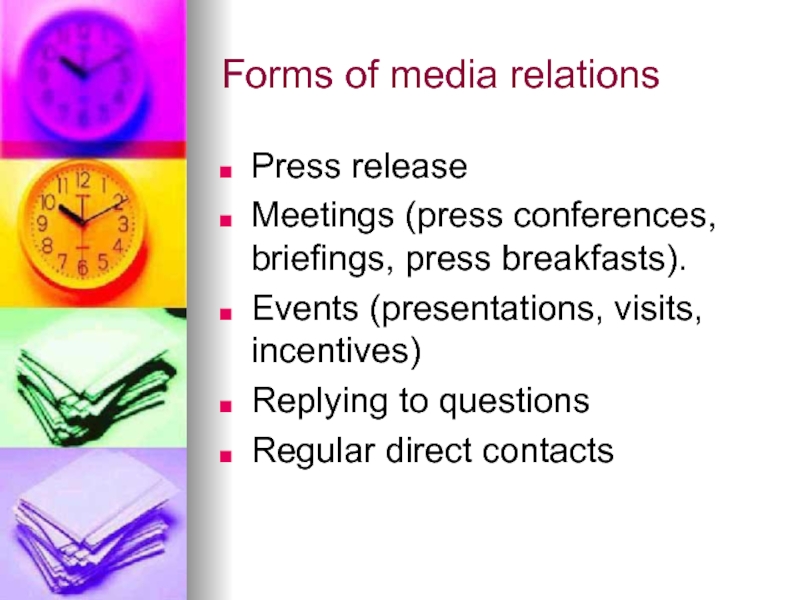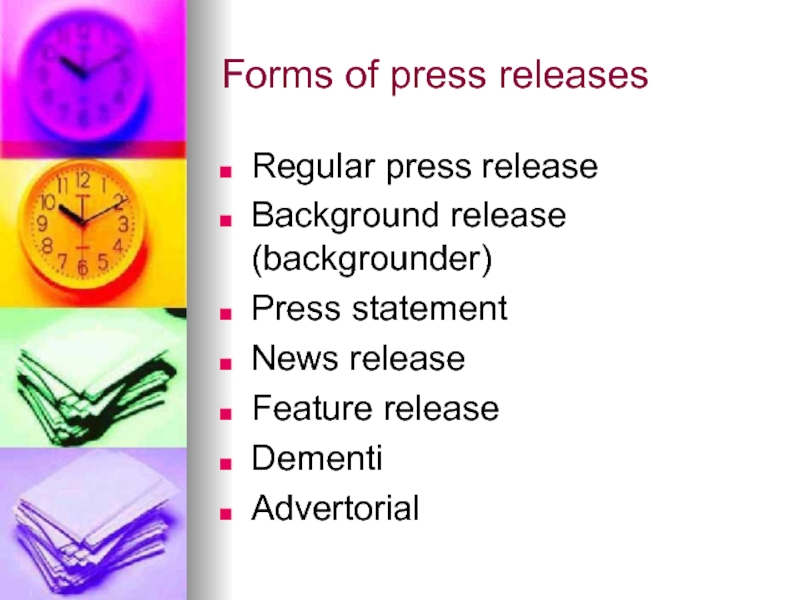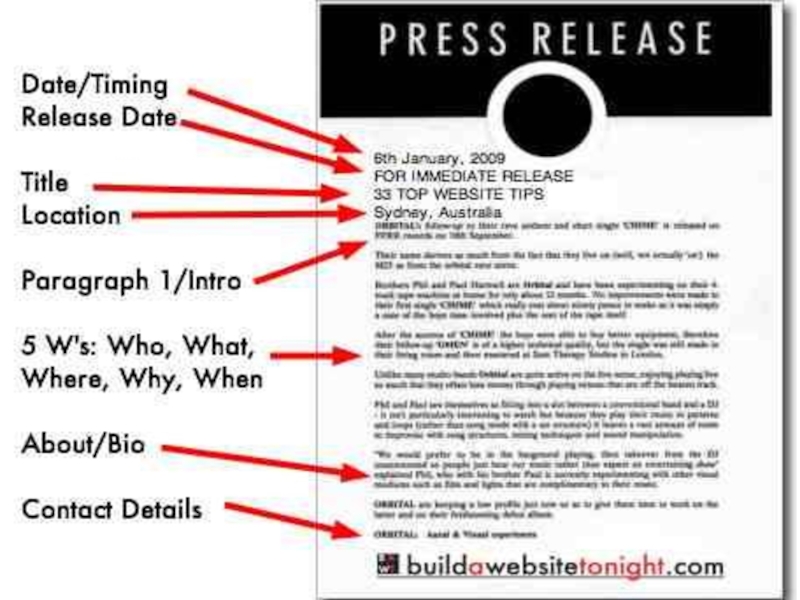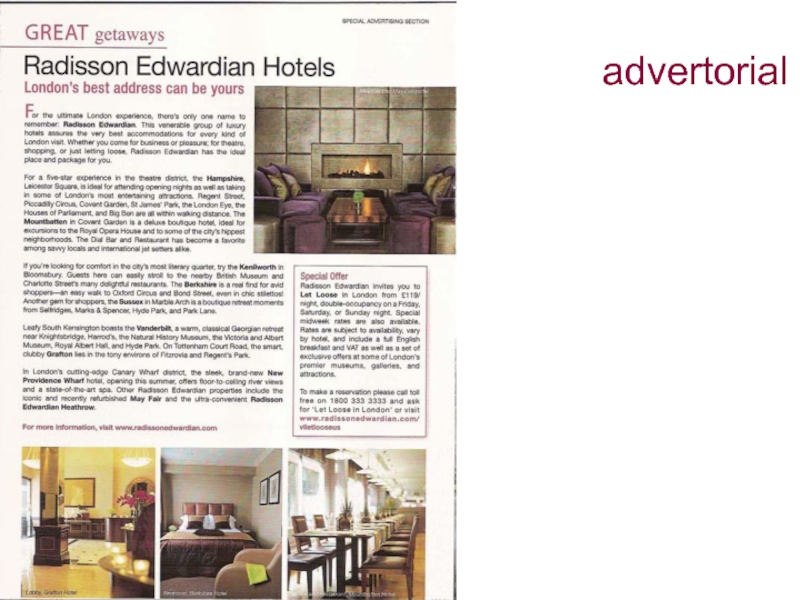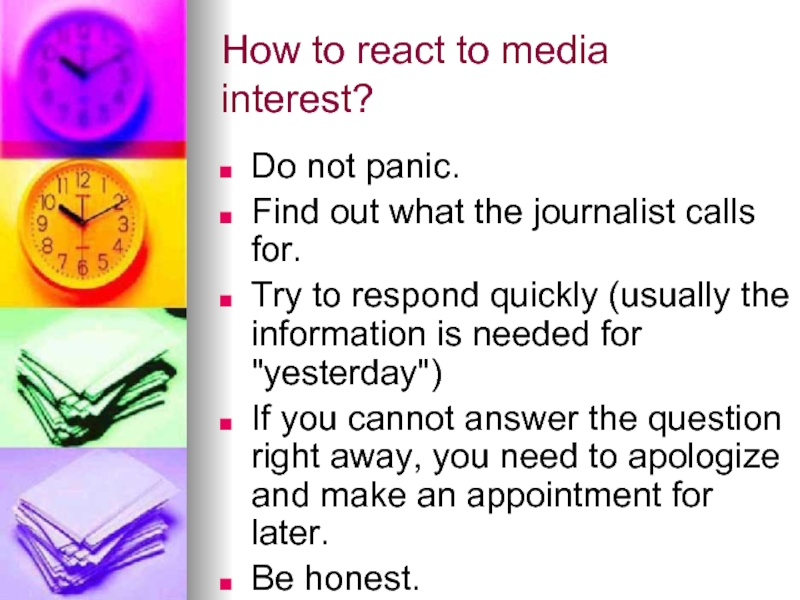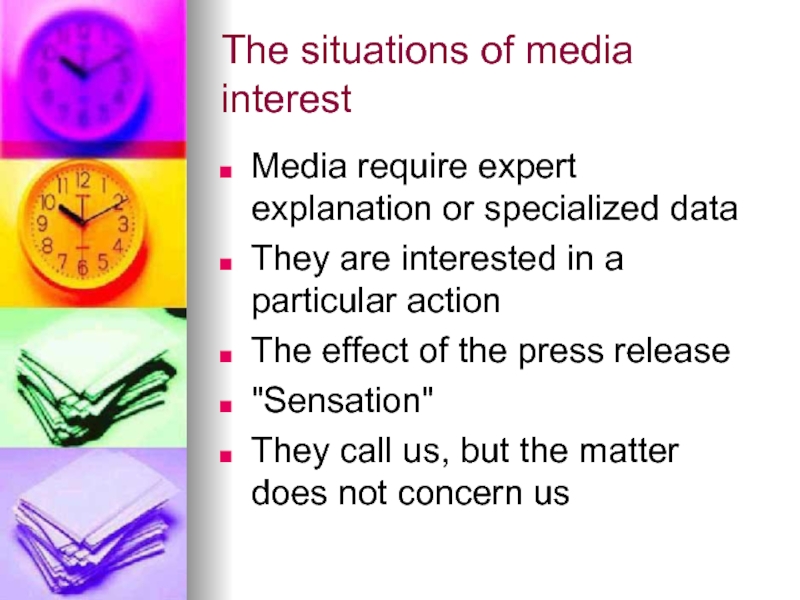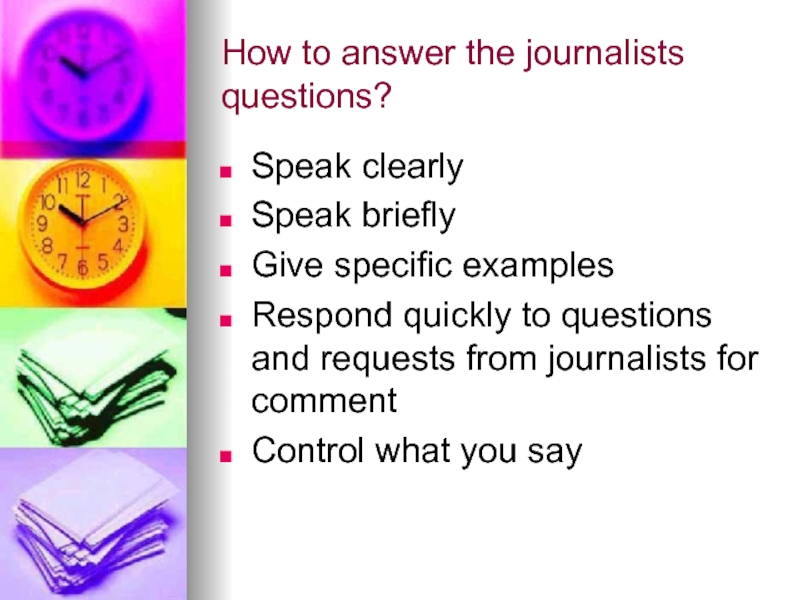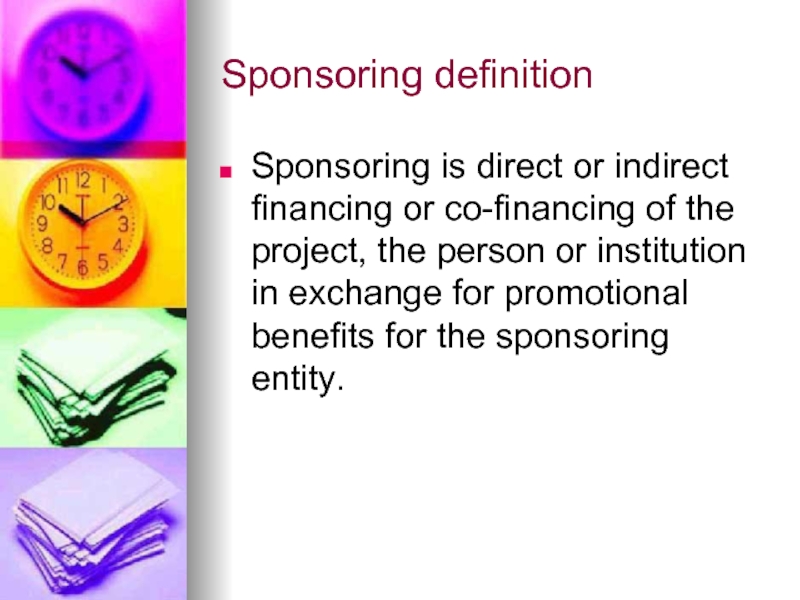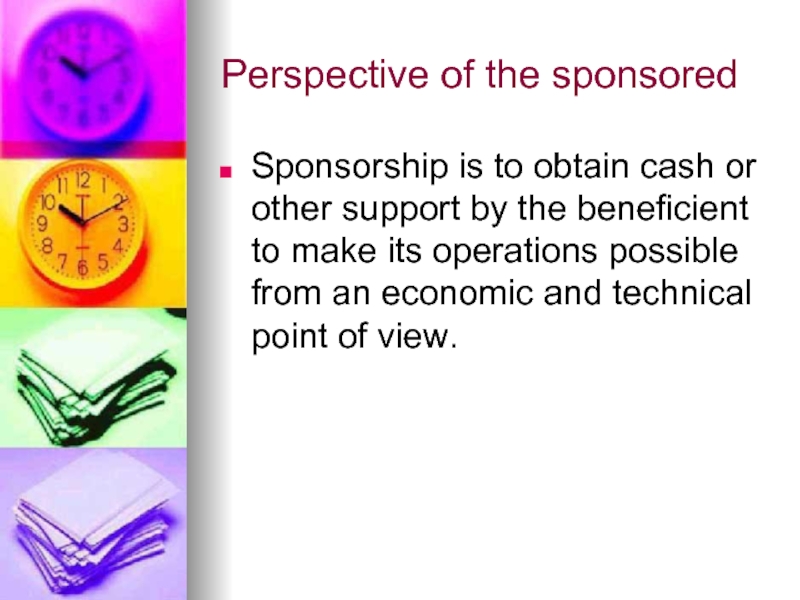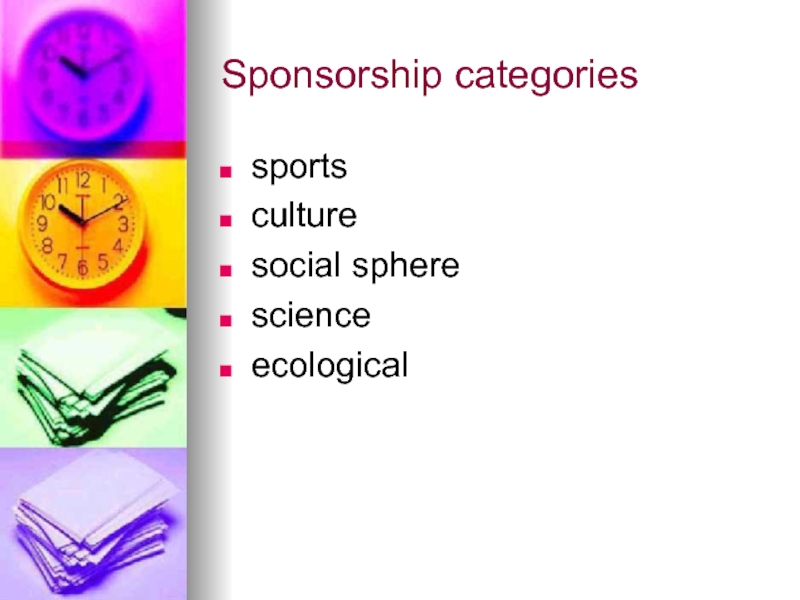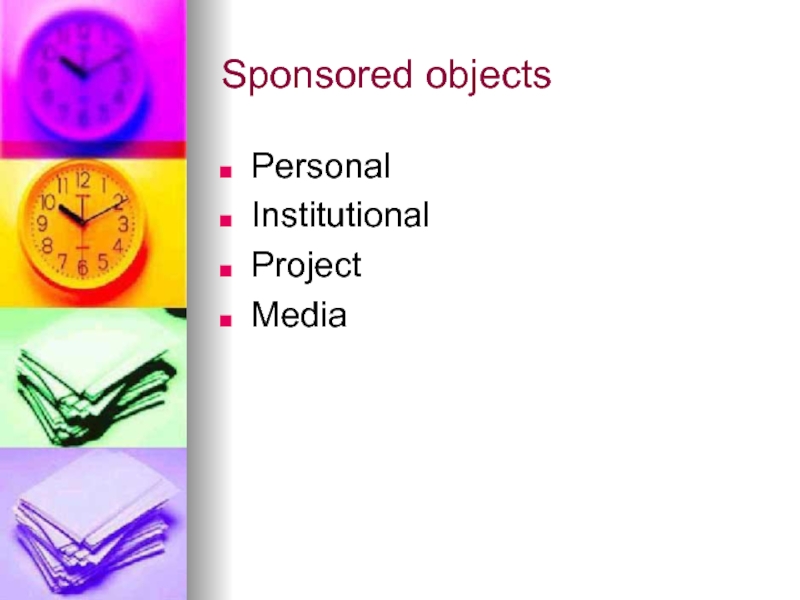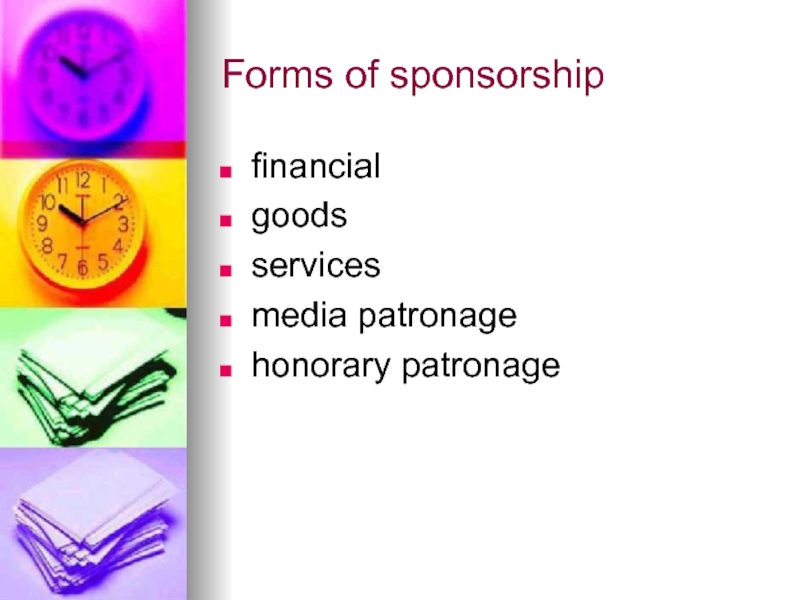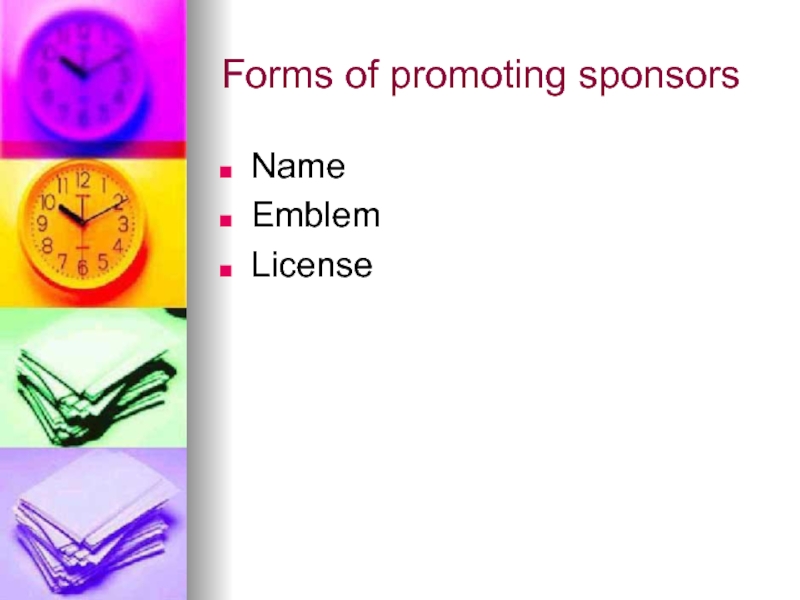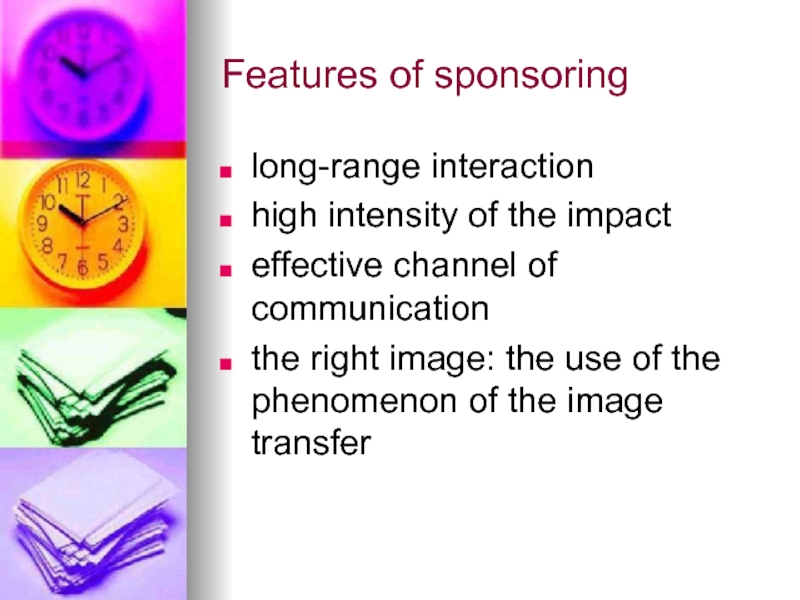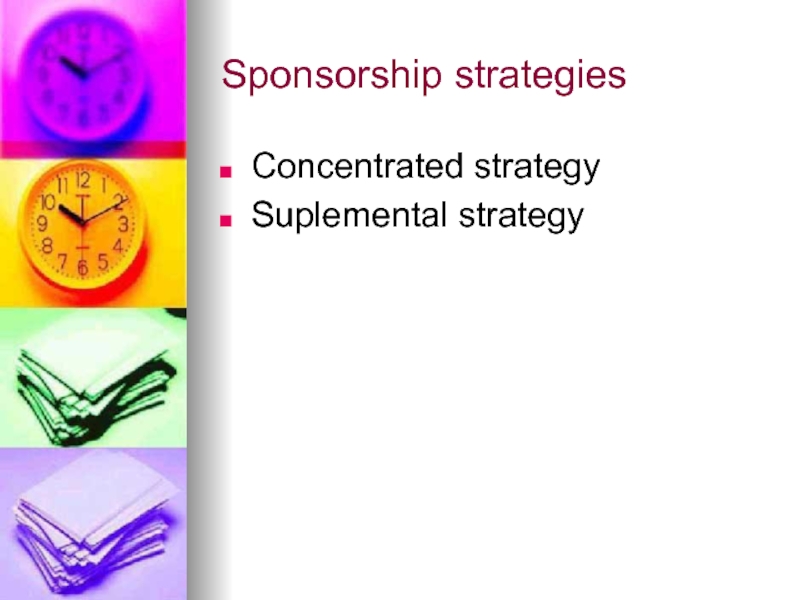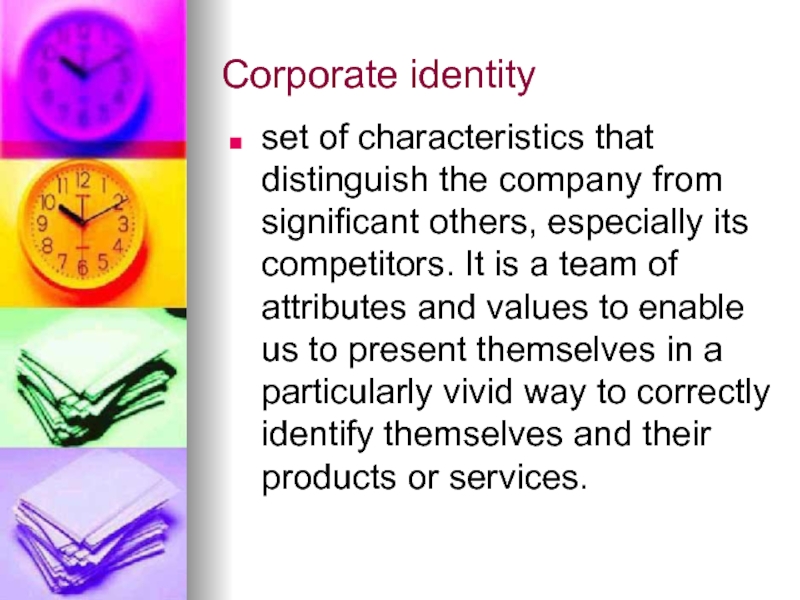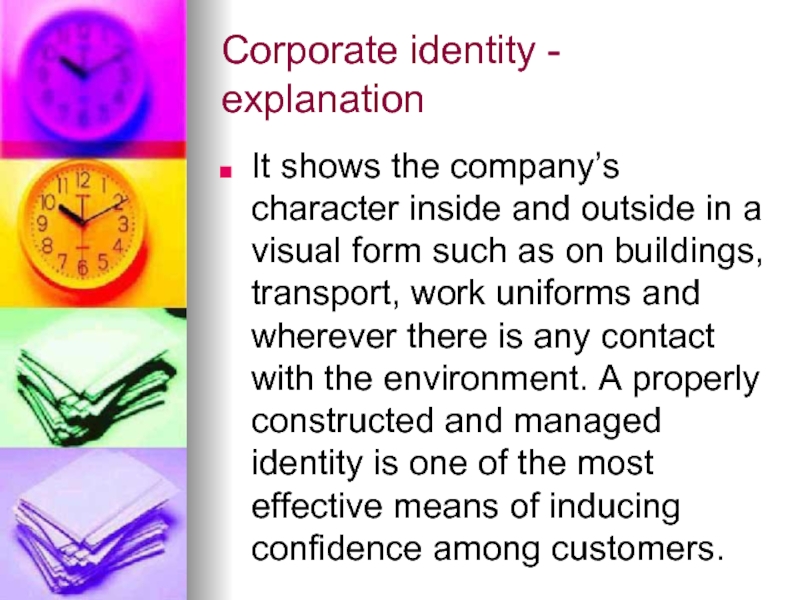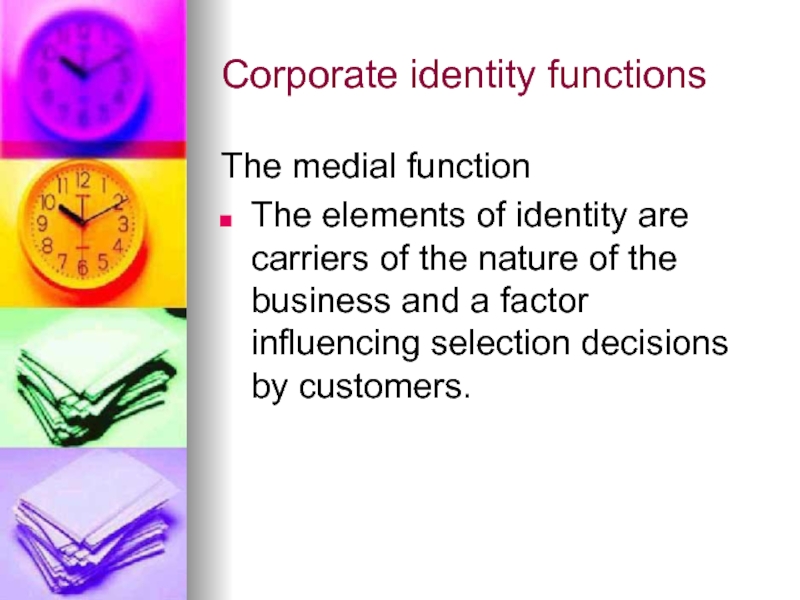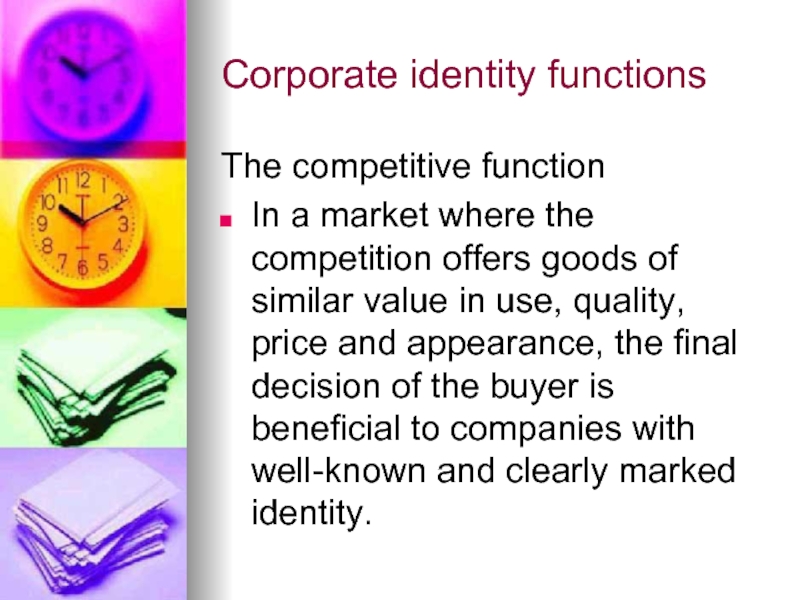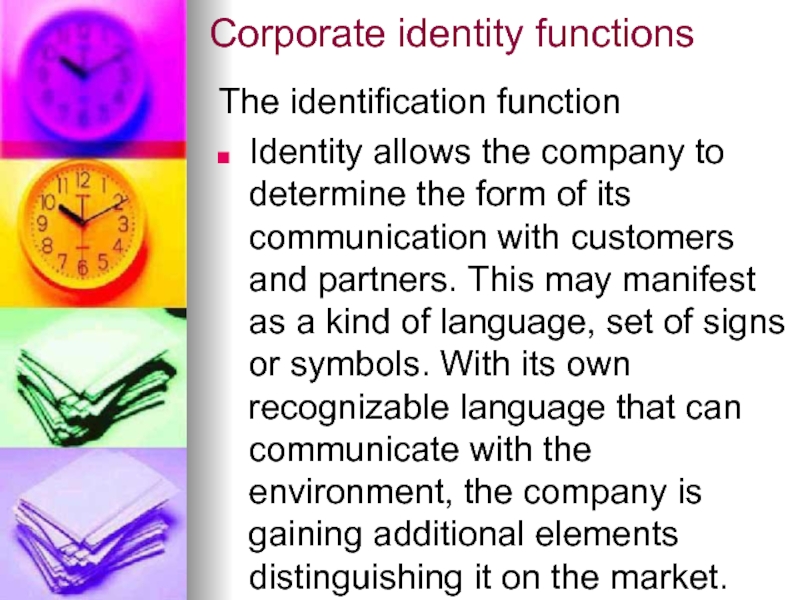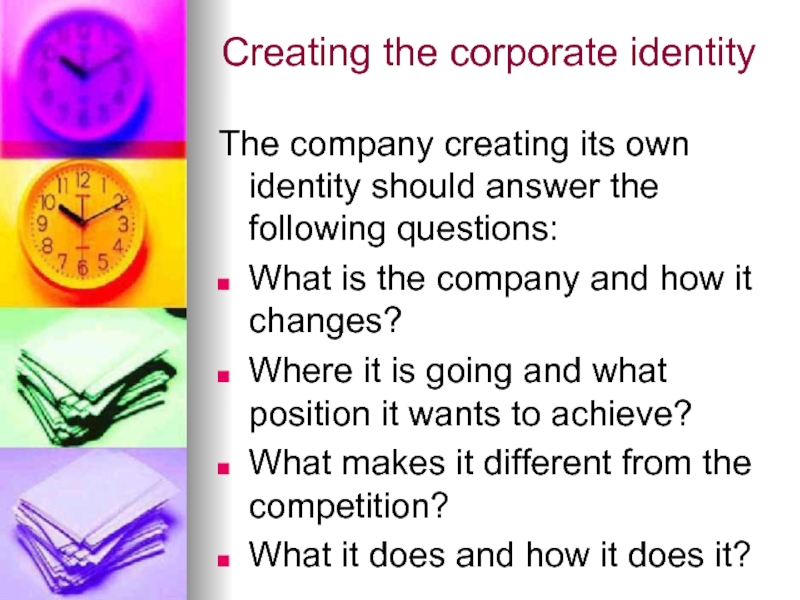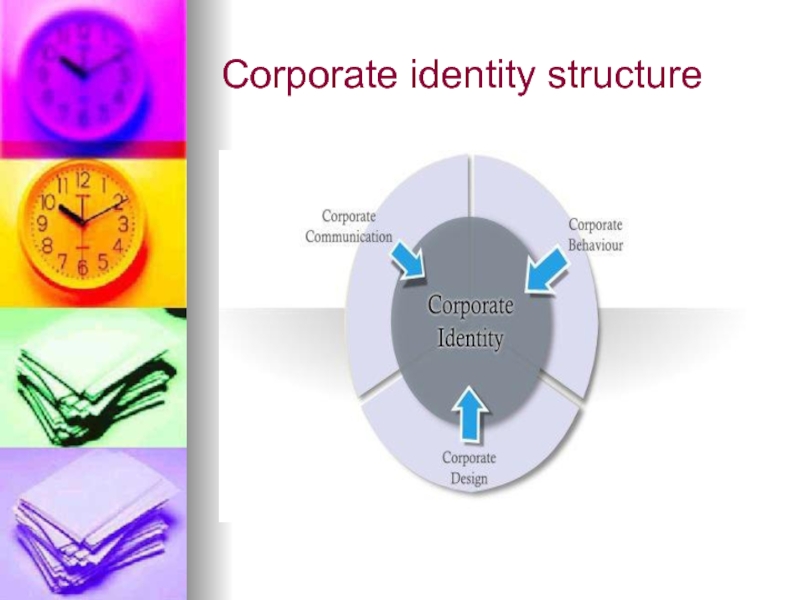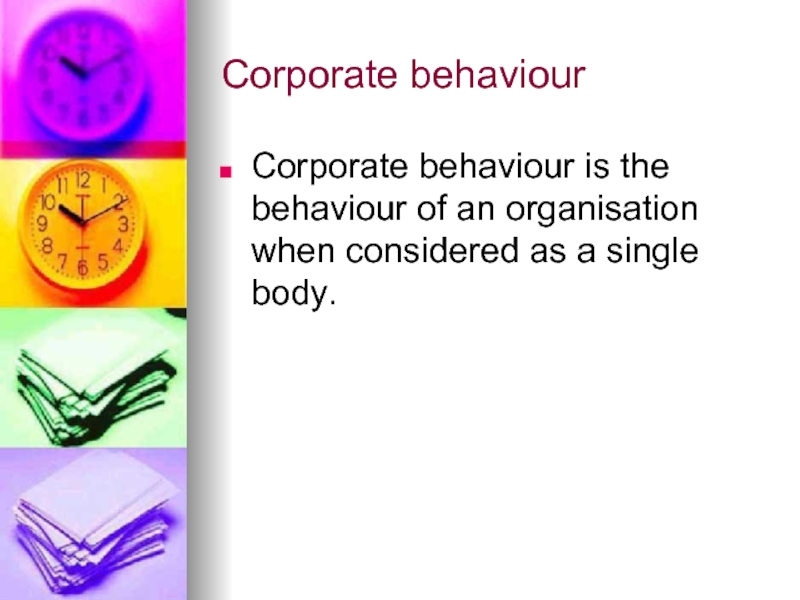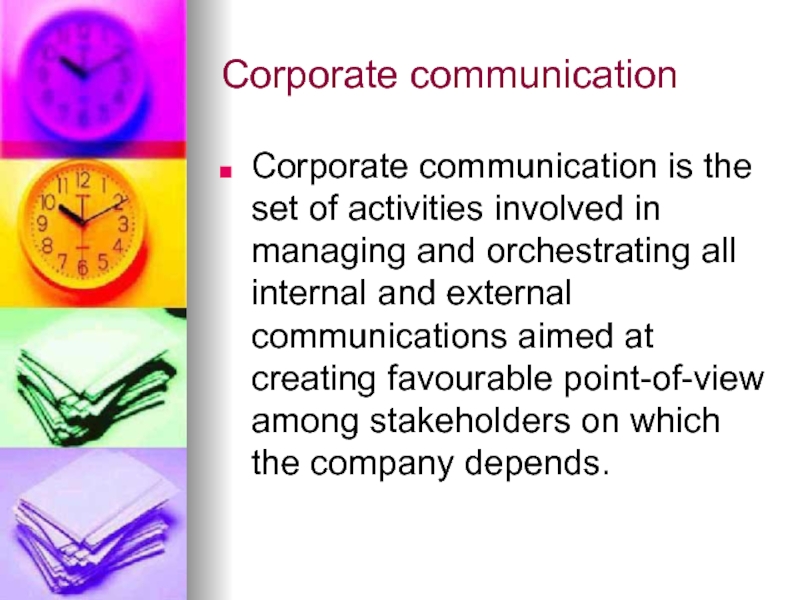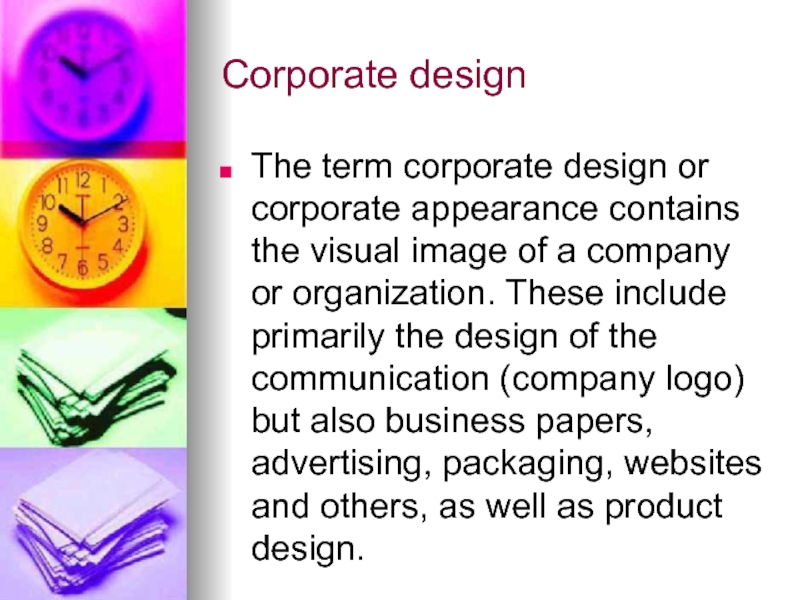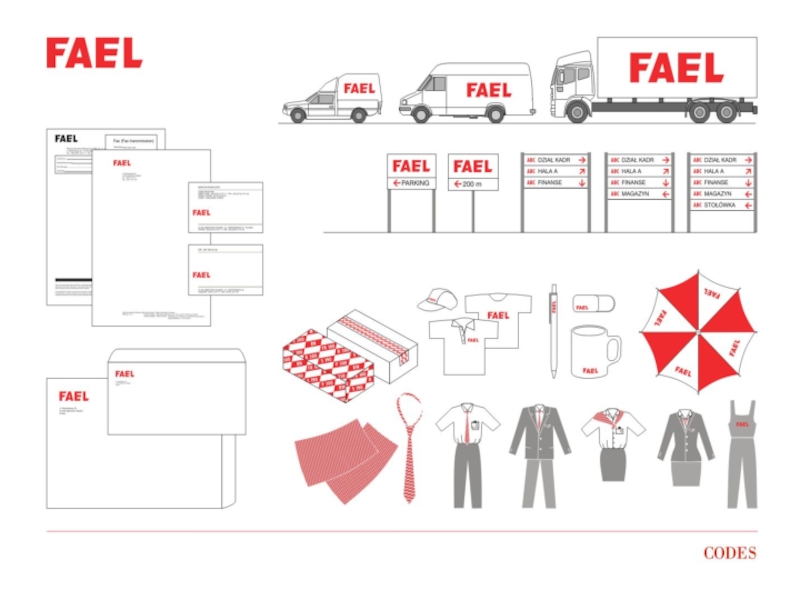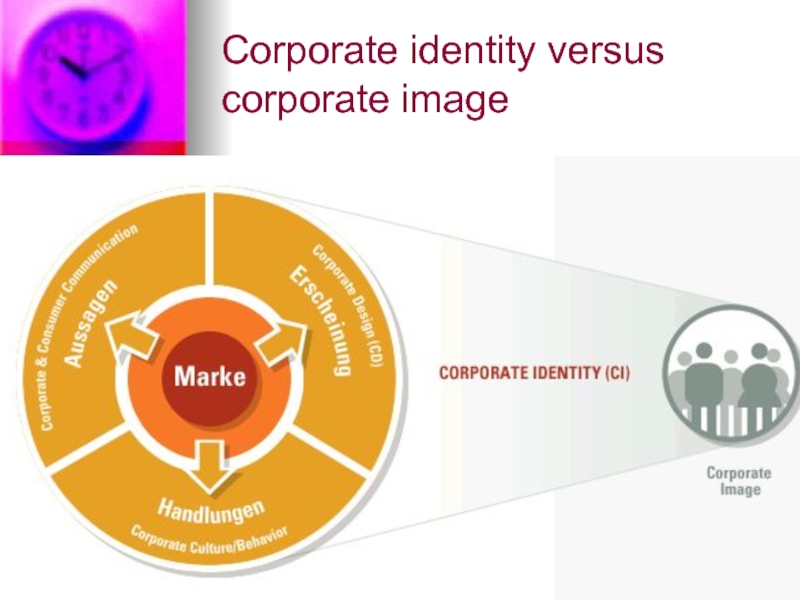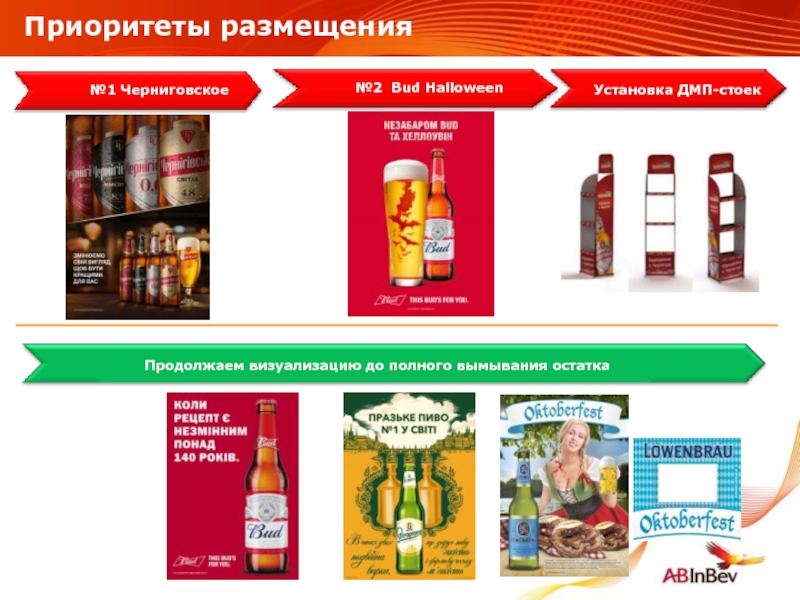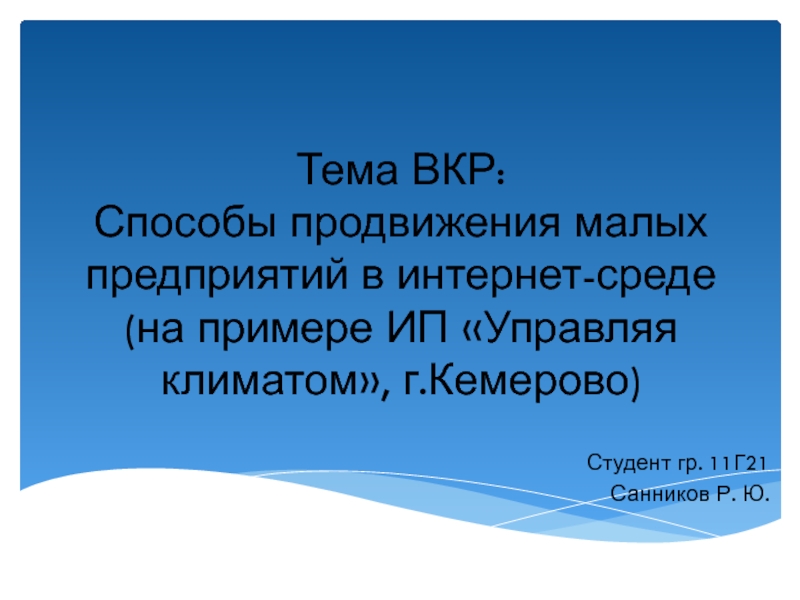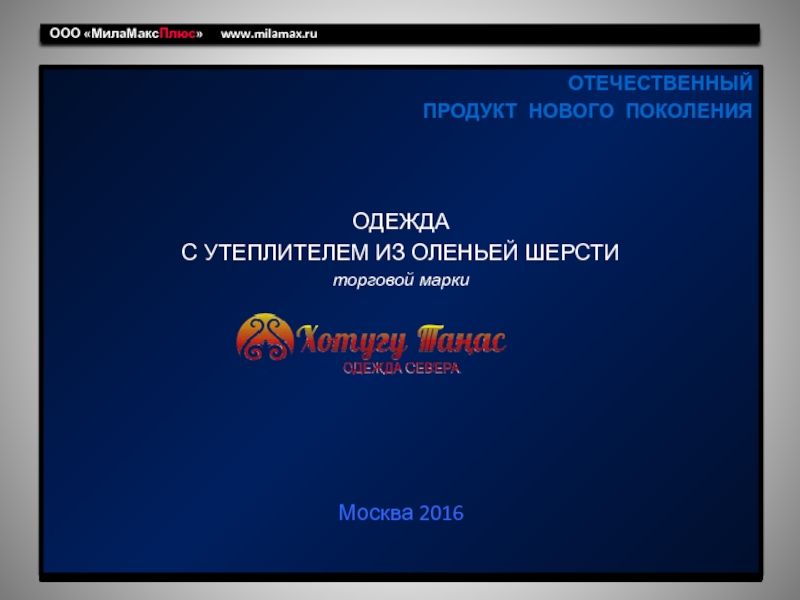- Главная
- Разное
- Дизайн
- Бизнес и предпринимательство
- Аналитика
- Образование
- Развлечения
- Красота и здоровье
- Финансы
- Государство
- Путешествия
- Спорт
- Недвижимость
- Армия
- Графика
- Культурология
- Еда и кулинария
- Лингвистика
- Английский язык
- Астрономия
- Алгебра
- Биология
- География
- Детские презентации
- Информатика
- История
- Литература
- Маркетинг
- Математика
- Медицина
- Менеджмент
- Музыка
- МХК
- Немецкий язык
- ОБЖ
- Обществознание
- Окружающий мир
- Педагогика
- Русский язык
- Технология
- Физика
- Философия
- Химия
- Шаблоны, картинки для презентаций
- Экология
- Экономика
- Юриспруденция
Public relations презентация
Содержание
- 1. Public relations
- 2. Definition Public Relations are a group of
- 3. PR activity base Public relations are based
- 4. Mission statement The essence of the reasons
- 5. Corporate culture Common values Expressed by patterns
- 6. Reputation Induces latent willingness to accept, trust
- 7. PR functions Developing knowledge and understanding for
- 8. PR audiences State and local authorities Opinion
- 9. Internal PR Internal PR is one of
- 10. Audiences of Internal PR Employees Associates
- 11. Importance of Internal PR Staff and other
- 12. The Aim of Internal PR The most
- 13. Audiovisual communication Audio systems Internal television Emploee wortals Intranet Mailings Mobile
- 15. Information boards Location Functions: simple information, explanation,
- 16. Corporate events Adaptation Motivation Team building Integration
- 17. Other Internal PR Instruments Corporate press Meetings
- 18. Media relations – the idea Organizations operate
- 19. Media relations Media relations rely on
- 20. Levels of media relations Formal Informal
- 21. Formal media relations Agreements Advertising services Media patronage
- 22. Informal relations The organization should establish contacts
- 23. Establishing relationships Determine the goals of media
- 24. Maintaining relationships Regular transfer of good information
- 25. How to choose journalists? If the organization
- 26. When to contact the media? The organization
- 27. What is interesting for media? The journalist
- 28. Forms of media relations Press release Meetings
- 29. Forms of press releases Regular press release
- 31. advertorial
- 32. How to react to media interest? Do
- 33. The situations of media interest Media require
- 34. How to answer the journalists questions? Speak
- 35. Sponsoring definition Sponsoring is direct or indirect
- 36. Perspective of the sponsored Sponsorship is to
- 37. Sponsorship categories sports culture social sphere science ecological
- 38. Sponsored objects Personal Institutional Project Media
- 39. Forms of sponsorship financial goods services media patronage honorary patronage
- 40. Forms of promoting sponsors Name Emblem License
- 41. Features of sponsoring long-range interaction high intensity
- 42. Sponsorship strategies Concentrated strategy Suplemental strategy
- 43. Corporate identity set of characteristics that distinguish
- 44. Corporate identity - explanation It shows the
- 45. Corporate identity functions The medial function The
- 46. Corporate identity functions The competitive function In
- 47. Corporate identity functions The identification function Identity
- 48. Creating the corporate identity The company creating
- 49. Corporate identity structure
- 50. Corporate behaviour Corporate behaviour is the behaviour of an organisation when considered as a single body.
- 51. Corporate communication Corporate communication is the set of
- 52. Corporate design The term corporate design or
- 54. Corporate identity versus corporate image
Слайд 2Definition
Public Relations are a group of communication tools serving to create
permanent relations of the organization with its environment.
Public Relations include the responsibility and the willingness to act in the interests of the organization and its environment.
Public Relations include the responsibility and the willingness to act in the interests of the organization and its environment.
Слайд 3PR activity base
Public relations are based on obtaining public support (or
each environment surrounding the organization).
Because many programs of shaping public opinion are based on communicating through the media, honesty, openness and subsidiarity are the basic categories of contacts with the media.
Because many programs of shaping public opinion are based on communicating through the media, honesty, openness and subsidiarity are the basic categories of contacts with the media.
Слайд 4Mission statement
The essence of the reasons for the organization existence.
It generates
a unique selling proposition, positioning, objectives, strategies.
Слайд 5Corporate culture
Common values
Expressed by patterns and heroes
Reinforced by rituals and customs
Source of collective work, productivity and morality
Слайд 6Reputation
Induces latent willingness to accept, trust and faith.
Unexpected, self-driven force being
the source of human action.
The honor and integrity of the manufacturer is the priceless ingredient of every product.
The honor and integrity of the manufacturer is the priceless ingredient of every product.
Слайд 7PR functions
Developing knowledge and understanding for the organization and its activities.
Creating internal and external image of the organization.
Creating goodwill towards the organization and its activities.
Provoking the involvement of internal and external environment of the organization for its business.
Facilitating the current problem-solving and eliminating the effects of a crisis.
Слайд 8PR audiences
State and local authorities
Opinion leaders
Business partners
Consumer organizations
Professional organizations
Media
Emploees
Consumers
Слайд 9Internal PR
Internal PR is one of the important areas of public
relations including team activities directed at the "internal environment" of the organization.
Слайд 10Audiences of Internal PR
Employees
Associates
Workers’ family members
Organization management
Owners and investors
Former
employees
Слайд 11Importance of Internal PR
Staff and other participants of "internal environment" are
the most credible ambassadors of the institution.
They create favorable image of the organization.
Neglected information policy, even in the smallest environment lead to the creation of an informal exchange of information.
Unflattering rumors leak out.
They create favorable image of the organization.
Neglected information policy, even in the smallest environment lead to the creation of an informal exchange of information.
Unflattering rumors leak out.
Слайд 12The Aim of Internal PR
The most important goal is to create
a dialogue with the internal environment.
It needs to create the attitude to listen to the voice of workers and the whole internal environment.
The incoming signals can not be ignored.
It needs to create the attitude to listen to the voice of workers and the whole internal environment.
The incoming signals can not be ignored.
Слайд 13Audiovisual communication
Audio systems
Internal television
Emploee wortals
Intranet
Mailings
Mobile
Слайд 15Information boards
Location
Functions: simple information, explanation, attitude change
Open space - kind of
Hyde Park, where people could post their information, comments, announcement, greetings
Слайд 17Other Internal PR Instruments
Corporate press
Meetings
Letters from the board (eg, congratulations on
the occasion of anniversaries and special achievements)
Box of comments and ideas
Competitions
Trainings
Box of comments and ideas
Competitions
Trainings
Слайд 18Media relations – the idea
Organizations operate in a particular environment. Whether
they will be effective in their action, largely depends on the social perception (awareness, acceptance or even involvement). Thus, organizations communicate their environment what they are doing. One way to fulfill this task is to reach out to the media (and through them to ordinary people).
Слайд 19Media relations
Media relations rely on keeping in contact with journalists,
so that in the media (press, radio, television) there is information on the achievements and accomplishments of the organization.
Слайд 22Informal relations
The organization should establish contacts with journalists in order to
gain their kindness and hospitality. Then they will willingly and competently write about it.
Слайд 23Establishing relationships
Determine the goals of media contacts
Determine media contact
Build a database
of contacts to the media
Prepare a proposal for cooperation
Prepare a proposal for cooperation
Слайд 24Maintaining relationships
Regular transfer of good information (attractive, well-prepared, meet the standards
of a good message);
Willingness to help - if the journalist is looking for help, give it or direct him to the right place;
Exclusiveness - serving them as the first important information and highlight it;
Equilibrium in contacts (not too often, not too rare).
Willingness to help - if the journalist is looking for help, give it or direct him to the right place;
Exclusiveness - serving them as the first important information and highlight it;
Equilibrium in contacts (not too often, not too rare).
Слайд 25How to choose journalists?
If the organization needs to inform the media
about something disturbing or very important, it is basic to identify the proper journalist.
Слайд 26When to contact the media?
The organization should contact the reporters when
it has something to say to interest them.
Not too often, but not too rare.
If the organization wants to convey the invitation to the event – it should contact in advance (not day to day, but not a month in advance - journalists forget).
It is worth to know the editorial cycle.
Not too often, but not too rare.
If the organization wants to convey the invitation to the event – it should contact in advance (not day to day, but not a month in advance - journalists forget).
It is worth to know the editorial cycle.
Слайд 27What is interesting for media?
The journalist does not work for himself,
but for his readers. His curiosity is also their curiosity. For the journalists a valuable information:
is actual - the highest value of "fresh news" is that the journalist will give it first (being actual also means to provide information in a timely manner, allowing for the publication, and not at the last minute);
concerns many people, the environment, which the medium adresses;
is interesting, distinctive, original;
relates to a known person.
is actual - the highest value of "fresh news" is that the journalist will give it first (being actual also means to provide information in a timely manner, allowing for the publication, and not at the last minute);
concerns many people, the environment, which the medium adresses;
is interesting, distinctive, original;
relates to a known person.
Слайд 28Forms of media relations
Press release
Meetings (press conferences, briefings, press breakfasts).
Events (presentations,
visits, incentives)
Replying to questions
Regular direct contacts
Replying to questions
Regular direct contacts
Слайд 29Forms of press releases
Regular press release
Background release (backgrounder)
Press statement
News release
Feature release
Dementi
Advertorial
Слайд 32How to react to media interest?
Do not panic.
Find out what the
journalist calls for.
Try to respond quickly (usually the information is needed for "yesterday")
If you cannot answer the question right away, you need to apologize and make an appointment for later.
Be honest.
Try to respond quickly (usually the information is needed for "yesterday")
If you cannot answer the question right away, you need to apologize and make an appointment for later.
Be honest.
Слайд 33The situations of media interest
Media require expert explanation or specialized data
They
are interested in a particular action
The effect of the press release
"Sensation"
They call us, but the matter does not concern us
The effect of the press release
"Sensation"
They call us, but the matter does not concern us
Слайд 34How to answer the journalists questions?
Speak clearly
Speak briefly
Give specific examples
Respond quickly
to questions and requests from journalists for comment
Control what you say
Control what you say
Слайд 35Sponsoring definition
Sponsoring is direct or indirect financing or co-financing of the
project, the person or institution in exchange for promotional benefits for the sponsoring entity.
Слайд 36Perspective of the sponsored
Sponsorship is to obtain cash or other support
by the beneficient to make its operations possible from an economic and technical point of view.
Слайд 41Features of sponsoring
long-range interaction
high intensity of the impact
effective channel of communication
the
right image: the use of the phenomenon of the image transfer
Слайд 43Corporate identity
set of characteristics that distinguish the company from significant others,
especially its competitors. It is a team of attributes and values to enable us to present themselves in a particularly vivid way to correctly identify themselves and their products or services.
Слайд 44Corporate identity - explanation
It shows the company’s character inside and outside
in a visual form such as on buildings, transport, work uniforms and wherever there is any contact with the environment. A properly constructed and managed identity is one of the most effective means of inducing confidence among customers.
Слайд 45Corporate identity functions
The medial function
The elements of identity are carriers of
the nature of the business and a factor influencing selection decisions by customers.
Слайд 46Corporate identity functions
The competitive function
In a market where the competition offers
goods of similar value in use, quality, price and appearance, the final decision of the buyer is beneficial to companies with well-known and clearly marked identity.
Слайд 47Corporate identity functions
The identification function
Identity allows the company to determine the
form of its communication with customers and partners. This may manifest as a kind of language, set of signs or symbols. With its own recognizable language that can communicate with the environment, the company is gaining additional elements distinguishing it on the market.
Слайд 48Creating the corporate identity
The company creating its own identity should answer
the following questions:
What is the company and how it changes?
Where it is going and what position it wants to achieve?
What makes it different from the competition?
What it does and how it does it?
What is the company and how it changes?
Where it is going and what position it wants to achieve?
What makes it different from the competition?
What it does and how it does it?
Слайд 50Corporate behaviour
Corporate behaviour is the behaviour of an organisation when considered as
a single body.
Слайд 51Corporate communication
Corporate communication is the set of activities involved in managing and
orchestrating all internal and external communications aimed at creating favourable point-of-view among stakeholders on which the company depends.
Слайд 52Corporate design
The term corporate design or corporate appearance contains the visual
image of a company or organization. These include primarily the design of the communication (company logo) but also business papers, advertising, packaging, websites and others, as well as product design.


